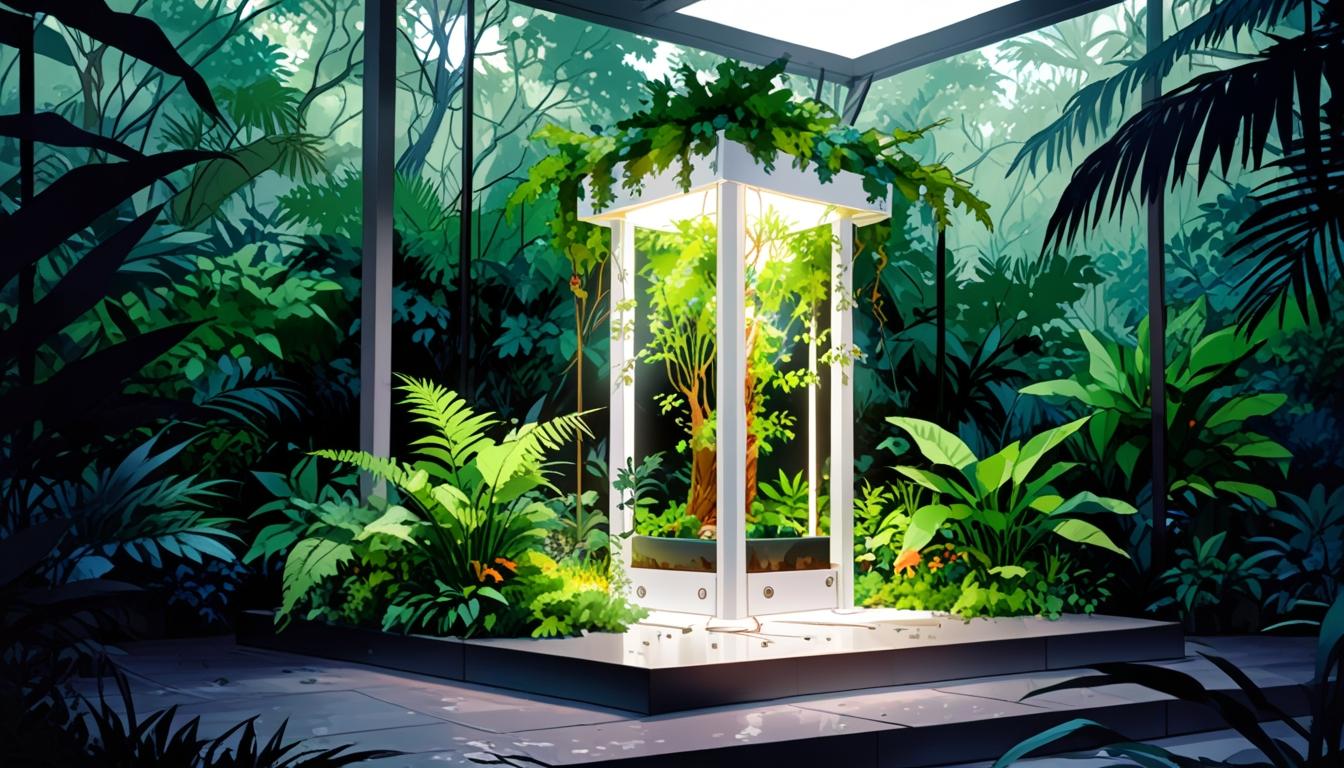At the 2025 Venice Architecture Biennale, the Belgian pavilion titled "Building Biospheres" presents a novel approach to landscape architecture by placing plants and trees at the heart of its design rather than traditional architectural models or photographs. The pavilion, created by landscape architect Bas Smets and his team, showcases a thriving mini-forest housed within a white-painted interior. This green space is supported by an intricate framework of advanced technology, including sensors, lighting, monitors, and high-tech instrumentation, which work in harmony with the vegetation.
Bas Smets, an architect and engineer turned landscape designer, explains the concept underpinning the pavilion: “We now understand that plants shape the environment more than it shapes them. So the question I wanted to ask was, ‘how can we use that plant intelligence to produce new types of landscape?’” He elaborates on the symbiotic relationship envisaged at the pavilion, where plants are not merely passive elements but active participants and controllers of their surroundings, adapting the environment to their needs and, in turn, providing benefits to humans.
The philosophy behind the project draws heavily on the emerging science of plant neurobiology, a field championed by Stefano Mancuso, Smets’s key collaborator. According to Smets, “Plants cannot move on the ground, so they need to be able to manipulate the environment around them. They need to be able to manipulate birds and bees to come to them. They have intelligence but also an extreme sensibility.” This intelligence is harnessed at the pavilion to create a “new symbiosis” between plants, architecture, and humans, where the goals of plants—for growth and photosynthesis—coincide with human needs for oxygen, cooler urban temperatures, and cleaner air.
The pavilion, commissioned by the Flanders Architecture Institute, features some 250 plants and trees predominantly from subtropical climates, a choice reflecting conditions comfortable both for the plants and for people. These are not static plants but part of a dynamic system equipped with technology to monitor sap flow, soil humidity, and other physiological responses. The data collected through AI and software integration allows the environment within the pavilion to adapt interactively to the plants’ needs over the six-month duration of the Biennale.
Smets describes the pavilion as a blend of art and scientific research. “The trees will be cyborgs,” he remarks. “Machines measure sap flow… while data processors and AI help with calculations around light and irrigation.” By fostering this adaptive environment, the project aims to rethink human habitation and architecture in a way that elevates the role of plants from mere decoration to essential co-inhabitants of built spaces.
Philosophical insights from Emanuele Coccia’s 2018 book, The Life of Plants, also inspire the pavilion’s concept, challenging traditional views on the agency and significance of plants. The pavilion’s approach supports the argument that architecture should not stand apart from nature but rather integrate with it, creating a “collective intelligence” of humans, plants, and buildings.
Smets is currently involved in other green urban projects, including the redesign of the Koningin Astridplein in Antwerp and the landscaping around the Notre-Dame cathedral in Paris, both efforts that aim to make city spaces more sustainable and resilient.
The Belgian pavilion’s innovative model continues Belgium’s strong tradition in the Venice Architecture Biennale, being one of the first countries to present a national pavilion in 1907 and often acclaimed for its compelling contributions. Smets draws parallels to the 2008 Belgian pavilion by architects Kersten Geers and David Van Severen, which created a serene garden environment inside the noisy Biennale.
Regarding the wider field of architecture, Smets cautions against superficial uses of greenery as merely symbolic or decorative. “I hope,” he says, “that architects see that plants are not just decoration but an active agent of our climate.” His vision encourages a shift towards integrating plant life as vital contributors to urban ecology and architectural design in the face of urbanisation and climate challenges.
Source: Noah Wire Services
